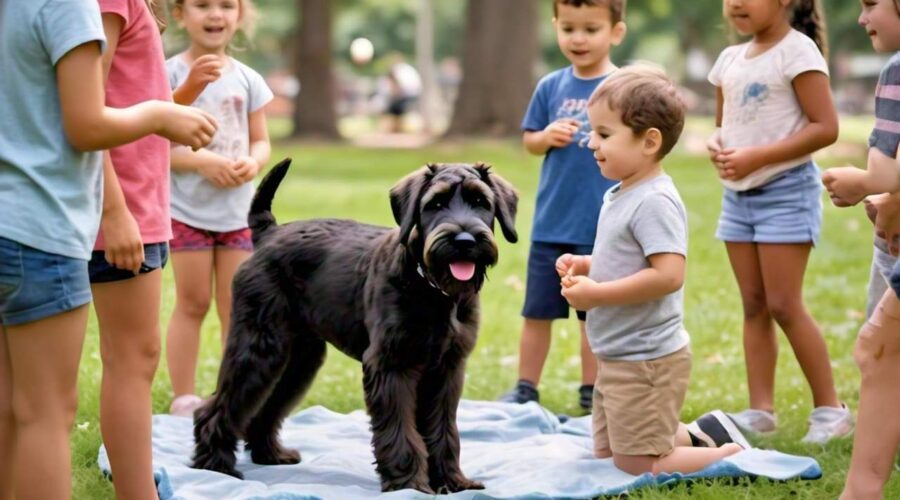Dos And Don’ts Of Bonding With Your New Puppy
Introduction
So, you’ve taken the plunge into puppy parenthood – congratulations! Get ready for a rollercoaster of cuddles, chaos, and countless heart-melting moments. In this guide, we’ll dive into the secrets of bonding with your furry sidekick while maintaining your authority (and sanity).
Bonding with your new puppy is crucial for their healthy development and your lifelong relationship. In the first few months of a puppy’s life, they go through a critical socialization period where they are highly receptive to new experiences. This is the ideal time to introduce your puppy to new people, animals, sounds, and environments in a positive way.
Spending quality time with your puppy, such as playing, training, and cuddling, helps build trust and a strong emotional connection. Consistent, reward-based training not only teaches your puppy good manners, but also reinforces that you are a source of good things. This lays the foundation for your puppy to view you as a leader they want to please.
Properly socializing and bonding with your puppy during this formative period helps prevent behavior problems down the line. A well-adjusted, confident puppy is more likely to grow into a well-adjusted, confident adult dog. Investing time in your puppy now will pay dividends for years to come in the form of a loyal, loving companion.
The Art of Bonding: Why It’s Essential
Bonding with your new pup isn’t just about cozy cuddles (although those are pretty great). It’s about setting the stage for a lifelong friendship built on trust and understanding. During their puppyhood, these little furballs are like sponges, soaking up experiences and forming opinions about the world.
Paw-some Activities for Bonding
1. Puppy Playtime: Think of it as your daily dose of laughter therapy. Grab a squeaky toy, engage in a game of tug-of-war, or just let loose and chase each other around the house. It’s exercise disguised as fun! Set aside 10-15 minutes a few times a day for unstructured play. Use interactive toys like balls, squeaky toys, or tug ropes to encourage your puppy to run, jump, and interact with you.
2. Trick Training: Show off your teaching skills by introducing simple tricks like “sit,” “stay,” and “high five.” Teach your puppy using positive reinforcement like treats and praise. The process of learning builds trust and engagement.
3. Hide and Seek: Who says this game is just for kids? Hide behind furniture or in closets, then revel in your pup’s sheer delight as they track you down. Bonus points if they find you before you can finish counting. Reward them with affection and a treat when they locate you. This game builds their seeking skills.
4. Obstacle Course: Transform your living room into an obstacle course using pillows, chairs, and tunnels made of blankets. It’s like Ninja Warrior, but with more wagging tails. Create a simple indoor obstacle course using household items. Guide your puppy through the course, rewarding them at each step. This stimulates their mind and body.
5. Grooming Bonding: Turn grooming sessions into pampering parties. Brushing, nail trimming, and bath time can be surprisingly enjoyable with the right treats and soothing words. This gets your puppy comfortable with handling.
Implementing these fun, effective activities on a regular basis will help you and your puppy build a strong, trusting relationship from the start.
Establishing Trust and Affection Through Consistent Interaction
As a new puppy owner, it’s important to understand the crucial role that consistent interaction plays in building trust and affection with your furry friend. Puppies have strong emotional needs and require attentive care to develop into well-adjusted, confident dogs.
One of the primary concerns with puppies is separation anxiety, which can arise when they feel insecure or disconnected from their owners. By engaging in regular playtime, training sessions, and affectionate cuddles, you can help your puppy feel safe, loved, and attached to you.
Consistent interaction also helps puppies learn appropriate behaviors and socialization skills. Through positive reinforcement and gentle guidance, you can shape your puppy’s conduct and foster a strong, lasting bond.
Remember, every puppy is unique, and their emotional needs may vary. Paying close attention to your puppy’s cues and adjusting your approach accordingly will help you build a foundation of trust and affection that will last a lifetime.
The Dos and Don’ts of Bonding with Your New Puppy
Bringing home a new puppy is an exciting time, but it’s important to avoid common mistakes that can hinder the bonding process. Here are some dos and don’ts to keep in mind when bonding with your new furry friend:
DO:
– Spend quality time with your puppy each day, engaging in positive interactions like playtime, training, and cuddling.
– Introduce your puppy to new people, animals, and environments gradually to help them feel safe and secure.
– Pay attention to your puppy’s body language, such as ear position, tail wagging, and eye contact, to understand their comfort level.
– Reinforce good behavior with treats and praise to build trust and encourage desired actions.
DON’T:
– Overwhelm your puppy with too much stimulation or interaction, as this can lead to stress and fear.
– Punish your puppy for accidents or mistakes during the housetraining process, as this can damage the bond.
– Neglect your puppy’s basic needs, such as providing a comfortable living space, a nutritious diet, and regular exercise.
– Ignore signs of distress or discomfort, as these may indicate underlying issues that need to be addressed.
By following these dos and don’ts, you can help your new puppy feel safe, secure, and loved, laying the foundation for a strong and lasting bond.
Creating a Lifelong Bond: Why Bonding with Your Puppy Matters
Bonding isn’t just about teaching tricks and sharing Instagram-worthy moments (although those are definitely perks). It’s about nurturing a confident, well-adjusted companion who brings joy to your life every day. The bond you build with your puppy during these early months can have a profound impact on their behavior, training, and overall well-being.
Puppy training and socialization are essential for preventing behavior problems down the line. By investing time in bonding with your puppy, you’re setting them up for success. A strong bond encourages better communication, trust, and responsiveness during training sessions. Puppies who feel securely attached to their owners are more likely to be well-adjusted, confident, and eager to please.
Beyond training, a close puppy-owner relationship also supports your pup’s mental health. Puppies that don’t receive enough positive interaction and affection can develop anxiety, fear, and other issues. By making time for play, cuddles, and quality one-on-one time, you’re nurturing your puppy’s emotional needs and helping them grow into a happy, well-adjusted dog.
Establishing a lifelong bond with your puppy takes consistency and patience, but the rewards are immeasurable. With the right training techniques and a commitment to building that special connection, you and your furry friend will be on your way to a lifetime of love and companionship.
Conclusion: Embrace the Joy of Bonding with Your New Furry Friend
Welcoming a new furry friend into your life is an exhilarating journey filled with love, learning, and laughter. As you embark on this adventure, remember that each moment of bonding is precious and contributes to a lifelong companionship that is deeply rewarding.
Take the time to engage in playful activities, gentle training sessions, and affectionate moments with your puppy. Capture these moments through photos and videos to cherish the memories forever. Share your experiences with fellow pet lovers and seek guidance when needed to ensure a happy and healthy bond with your furry companion. Celebrate every milestone, from the first successful trick learned to the heartwarming cuddles shared on lazy afternoons. Your journey with your new furry family member is unique and special, filled with endless opportunities for growth and joy. Embrace the journey wholeheartedly, and revel in the incredible bond you’re building—one pawprint at a time.
- ‹ Previous
- 1
- 2







